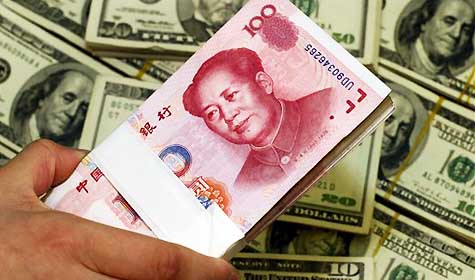
Possibly the world’s most powerful national digital currency – China’s digital yuan. Source: AP.
JD.com begins accepting China’s Digital Yuan
- China is about to embark on a second city-wide test of its central bank digital currency, the digital yuan
- If expanded nationwide, China could turn into the most powerful economy yet to offer a national digital currency, beating a forthcoming digital version of the euro from the European Central Bank
Central banks around the world are within reach of launching sovereign digital currencies, with the Bahamas — whose central bank launched its Sand Dollar beyond a pilot program in October this year — topping the chart. Perhaps most significant, however, is that of The People’s Bank of China, which has been researching a digital yuan since 2014. Today, China stands a chance of being the first major economy to introduce a sovereign digital currency.
As a matter of fact, China has left the rest of the world in the dust when it comes to digital currencies. It is not surprising considering the way the government and domestic companies such as e-commerce giant Alibaba Group Holding and its fintech affiliate Ant Group have used digital technology to transform China’s traditional banking and financial architecture into a cutting-edge, online-focused, and user-friendly system for the internet era.
According to EY, China has one of the most advanced digital ecosystems in the world, with more than 800 million active internet users and 788 million people with mobile phones in their pockets.
The first pilot test
To recall, when Shenzhen kicked off China’s first digital yuan giveaway campaign in October, it was meant for 50,000 local residents with a total of 10 million digital yuan available. However, nearly 2 million people in Shenzhen signed up for the lottery, meaning the winning probability was already less than 3%.
The population of Suzhou (10.7 million) on the other hand is smaller than that in Shenzhen (13 million), and the total participants of the second test are now doubled to 100,000 residents. During the Shenzhen rollout, residents had less than seven days to spend their free digital yuan. The Suzhou test period has been extended to more than two weeks from December 11 to December 27.
What do we know now?
We know that the PBOC has already finished building the infrastructure for its Digital Currency Electronic Payment (DCEP) system and has been carrying out local testing in cities, including Shenzhen and Suzhou, although no date has been set for its official launch.
The most recent development is that China will be embarking on a second city-wide test of its central bank digital currency on a much wider scale than the first one in multiple crucial aspects. The city of Suzhou announced last week that it will give away 20 million yuan – or US$3 million – in the form of a digital renminbi via lottery, which is similar to the first one conducted in Shenzhen.
The purpose is to encourage the testing of DC/EP during the upcoming “Double 12” online shopping season although the scope and the scale of the Suzhou test appear to be more extensive in several notable ways. One notable advance of the Suzhou test is the acceptance of DC/EP by China’s e-commerce giant JD.com, although it is not a platform-wide adoption.
According to JD.com, lottery winners can spend the DC/EP via the e-commerce giant’s mobile app on goods from its proprietary warehouses only — meaning that products sold by third-party vendors on the platform are excluded.
With that being said, the online acceptance marks a new type of use case scenario for digital yuan since JD’s proprietary warehouse is a key business model that differentiates itself from Alibaba’s Taobao or Tmall. In fact, JD.Com’s proprietary offline stores are also among a total of nearly 10,000 physical shops that will support the DC/EP payments during the test, including supermarkets, restaurants, and convenience stores in major commercial areas across the whole of Suzhou city.
By comparison, the test in Shenzhen had about 3,300 physical stores – all limited to inside the city’s Luohuo district – that supported DC/EP payments. Also, according to the government’s WeChat post, for Suzhou’s test, it will select fewer than 1,000 people from the 100,000 lottery-winners to test an offline payment feature for DC/EP which is based on near-field wireless technologies.
Another prove that the latest round of test involves a wider scope of technological advancement is when the People’s Bank of China (PBoC) said DC/EP wallets, at the point of their official rollout, will be capable of sending transactions by having two smartphones or hardware devices touch each other — even without an internet connection.
The central bank’s Digital Currency Research Institute was granted a patent for “a method and system of using digital currency chip cards to complete offline transactions” in October. And since PBoC has been developing the digital yuan system with some commercial banks as well as other relevant entities since the end of 2017, China’s four biggest state-owned commercial banks have participated in the development of mobile and hardware wallets for DC/EP with initial leaks starting to surface since April this year.
In the Suzhou test, residents will be able to choose to activate their digital yuan wallets at two additional state-owned institutions: Bank of Communications and the Postal Savings Bank of China. Prior to this, lottery-winners in the Shenzhen test had to choose one of the four banking giants in order to activate a DC/EP wallet, even if they don’t have a saving account with any of the four.
In addition to these banking giants, Union Pay, DiDi, Meituan, AliPay as well as WeChat Pay have also been participating in the DC/EP wallet development.


